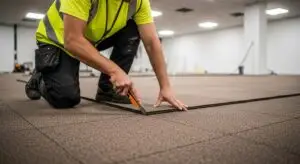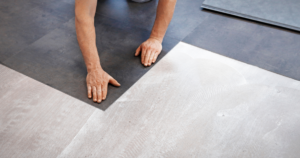Introduction:
As environmental awareness continues to grow, many homeowners are seeking ways to make their homes more sustainable. One of the easiest and most impactful ways to do this is by choosing eco-friendly flooring options. Flooring choices like bamboo, cork, and recycled materials offer durability, style, and sustainability, making them ideal for modern homes. This article will explain the various benefits of eco-friendly flooring and provide an overview of the best green flooring materials available. Whether you’re building a new home or renovating, choosing sustainable flooring options can reduce your environmental impact and potentially even save on energy costs.
1. Bamboo Flooring: A Rapidly Renewable Resource
Bamboo flooring is a popular choice among environmentally conscious homeowners, as bamboo is a fast-growing grass that regenerates much quicker than traditional hardwood trees. Bamboo can be harvested in as little as five years, compared to hardwood trees, which can take 20-50 years to mature.
- Sustainability: Bamboo is considered a rapidly renewable resource, as it can be harvested without needing to replant. Its quick regrowth makes it a more sustainable choice than traditional hardwood flooring, which often contributes to deforestation.
- Durability and Style: Bamboo flooring is as durable as some of the toughest hardwoods, such as oak and maple. It comes in a variety of styles and finishes, making it a versatile option for modern homes. Plus, bamboo’s sleek appearance works well in contemporary and minimalist designs.
2. Cork Flooring: Renewable and Comfortable
Cork flooring is another sustainable option that offers both environmental benefits and practical advantages for homeowners. Harvested from the bark of the cork oak tree, cork is a renewable resource because the bark regrows every few years, allowing repeated harvesting without harming the tree.
- Eco-Friendly Benefits: Cork trees are not cut down to harvest the material, meaning the forests remain intact and healthy. Additionally, cork flooring is biodegradable, making it an excellent choice for eco-conscious homeowners looking to reduce their carbon footprint.
- Comfort and Insulation: Cork flooring is soft underfoot, providing comfort and a natural warmth that makes it ideal for living rooms, bedrooms, and playrooms. Its insulation properties can also help reduce energy costs by keeping your home warmer in the winter and cooler in the summer.
3. Recycled Wood and Tile Flooring
For homeowners looking to reduce waste and promote sustainability, recycled flooring materials are an excellent option. Recycled wood flooring is made from reclaimed wood sourced from old buildings, barns, or even recycled wine barrels. Recycled tile, on the other hand, can be crafted from materials like glass, metal, and ceramics.
- Environmental Impact: By using recycled materials, you reduce the demand for new raw materials and keep valuable resources out of landfills. Reclaimed wood, for instance, avoids the need for fresh lumber and cuts down on deforestation.
- Aesthetic Appeal: Recycled wood flooring offers a unique, rustic charm that’s difficult to replicate with new materials. Each plank has its own character, including weathered textures, knots, and patina, giving your home a one-of-a-kind look.
4. Linoleum Flooring: A Biodegradable Option
Unlike its synthetic counterpart, vinyl, linoleum is made from natural materials, including linseed oil, cork dust, and wood flour, making it a biodegradable option for homeowners seeking green flooring solutions.
- Sustainability: Linoleum is made from renewable resources and is 100% biodegradable, meaning it will break down naturally at the end of its life cycle, reducing the environmental impact.
- Health and Safety: In addition to being eco-friendly, linoleum is a hypoallergenic material, which can contribute to better indoor air quality—an essential factor for families with pets or allergies.
5. Energy Savings and Health Benefits
Eco-friendly flooring materials not only reduce your environmental impact, but they can also contribute to energy savings and improved indoor air quality. Many sustainable flooring options, like cork and linoleum, have natural insulating properties, which can help lower your energy bills by maintaining comfortable indoor temperatures. Additionally, materials like bamboo, cork, and linoleum emit low levels of volatile organic compounds (VOCs), which improves air quality and reduces health risks for your family.
- Energy Efficiency: Cork and linoleum, for example, are natural insulators, which means they help maintain stable indoor temperatures, reducing the need for heating or cooling. This can result in long-term energy savings.
- Health and Air Quality: Unlike synthetic materials that can off-gas harmful chemicals, eco-friendly flooring options like cork, bamboo, and recycled materials have low VOC emissions, making them healthier for you and your family.
Conclusion:
Choosing eco-friendly flooring is a great way to enhance your home’s aesthetic while minimizing your environmental impact. Sustainable options like bamboo, cork, and recycled materials not only offer durability and style but also contribute to energy savings and better indoor air quality. If you’re considering an eco-conscious home renovation, Renew Floorcovering in Edmonton offers a wide range of sustainable flooring options. Contact us today to learn more about integrating green flooring materials into your home design.







